In order to activate the Lifter, you must push the handle to the right approximately 100 degrees and lock it with the security latch, which blocks it during the working period.
Format and characteristics:
The practical and efficient design of Ima’s Permanent magnet lifter, allows any type of metallic objects to be handled, whether they have flat or round surfaces.
The Lifter has a safety lever which avoids accidental demagnetisation. These Permanent lifters are the answer to the handling of ferrous materials at an exceptionally low cost, without any installation or maintenance cost whatsoever. Also, thanks to its low weight, it can be incorporated in any type of crane mechanism.
- POWERFUL: High capacity, even with a big air gap.
- SAFE: A 3x safety ratio and a lever with security lock.
- LIGHT: Detachment strength from 80 to 115 times its weight.
- COMFORTABLE: Magnetisation can be activated with one hand.
- EASY MAINTENANCE: The contact magnetic poles can be rectified frequently.
Objetcs to be lifted:
IMA Magnetic Lifters are supplied in 6 different models: IMA 100 / 250 / 500 / 1000 / 2000 / 3000 indicating the maximum kg weight the models can lift in the case of flat objects:
Standard measurement:
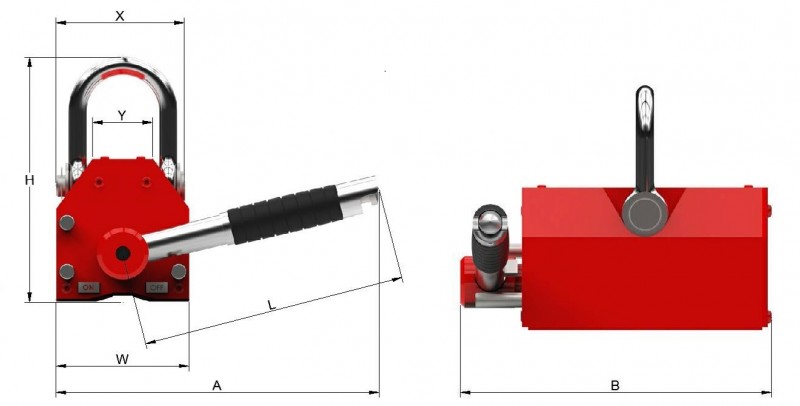
| Code |
Weight (kg) |
A (mm) |
B (mm) |
H (mm) |
W (mm) |
L (mm) |
X (mm) |
Y (mm) |
Max load (kg) |
| flat pieces |
tubular parts |
| ELVE01010 |
3 |
166 |
127 |
120 |
64 |
142 |
64 |
29 |
100 |
30 |
| ELVE01011 |
10 |
217 |
206 |
171 |
88 |
176 |
83 |
39.5 |
250 |
75 |
| ELVE01012 |
20 |
268 |
265 |
226 |
118 |
219 |
108 |
51.5 |
500 |
150 |
| ELVE01013 |
37 |
334 |
317 |
248 |
148 |
266 |
120 |
64 |
1000 |
300 |
| ELVE01014 |
80 |
458 |
451 |
298 |
172 |
380 |
154 |
87.5 |
2000 |
600 |
| ELVE01016 |
160 |
621 |
509 |
401 |
226 |
512 |
195 |
111.5 |
3000 |
900 |
However, it should be taken into account that the characteristics of objects to be lifted can affect the capacity of the lifter.
Maximum forcé to be obtained under optimum conditions, using a plate of ST-37 iron, sufficiently thick (≥30-80mm) and a smooth, flat surface.
Influential Factors:
Four basic factors which affect the magnetic pull of a magnetic lifter:
- Contact Surface
If there is an air gap between the lifter and the object that is to be lifted, the magnetic flux is obstructed, thereby reducing the magnetic pull. Gaps are caused by various things (oxidation, paints, oils, or a rough surface) generate an air gap and therefore, a decrease in the strength.
- Thickness
The lifter’s magnetic flux requires a minimum material thickness to work. When the material which has to be lifted doesn’t have a minimum thickness, the magnetic attraction strength decreases considerably .
- Length And Width
When the length and width of the material to be lifted are increased, the ends bend down and the air gap becomes wider, so there is a space between the lifter and the load. This occurs more often with thinner thicknesses. When it does happen, one of the possible solutions is to use more than one lifter in two points or more.
- The Material
Steels low in carbon are good magnetic conductors, however, those with a high percentage of carbon or alloy with another material, loose magnetic properties, so the lifter’s strength is decreased considerably. The hardest steels have the worst magnetic properties and tend to conserve residual magnetism.
| Loading Material |
Weight (kg) |
| Unalloyed Steel 0.1-0.3%C |
100% |
| Unalloyed Steel 0.4-0.5%C |
90% |
| Alloyed steel F-522 |
80-90% |
| Fray cast iron |
50-60% |
| F-522 Tempered steel at 55-60 HRc |
40-50% |
| Stainless Austenitic Steel |
0% |
| Brass; Aluminium; Copper |
0% |
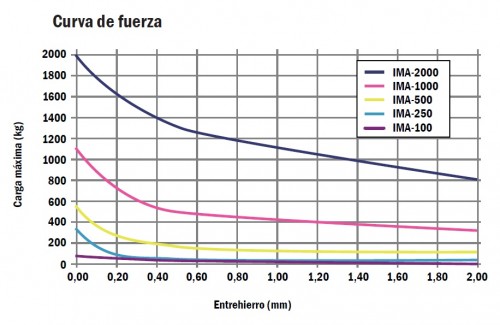
View 360º
Click on the image, hold and turn.







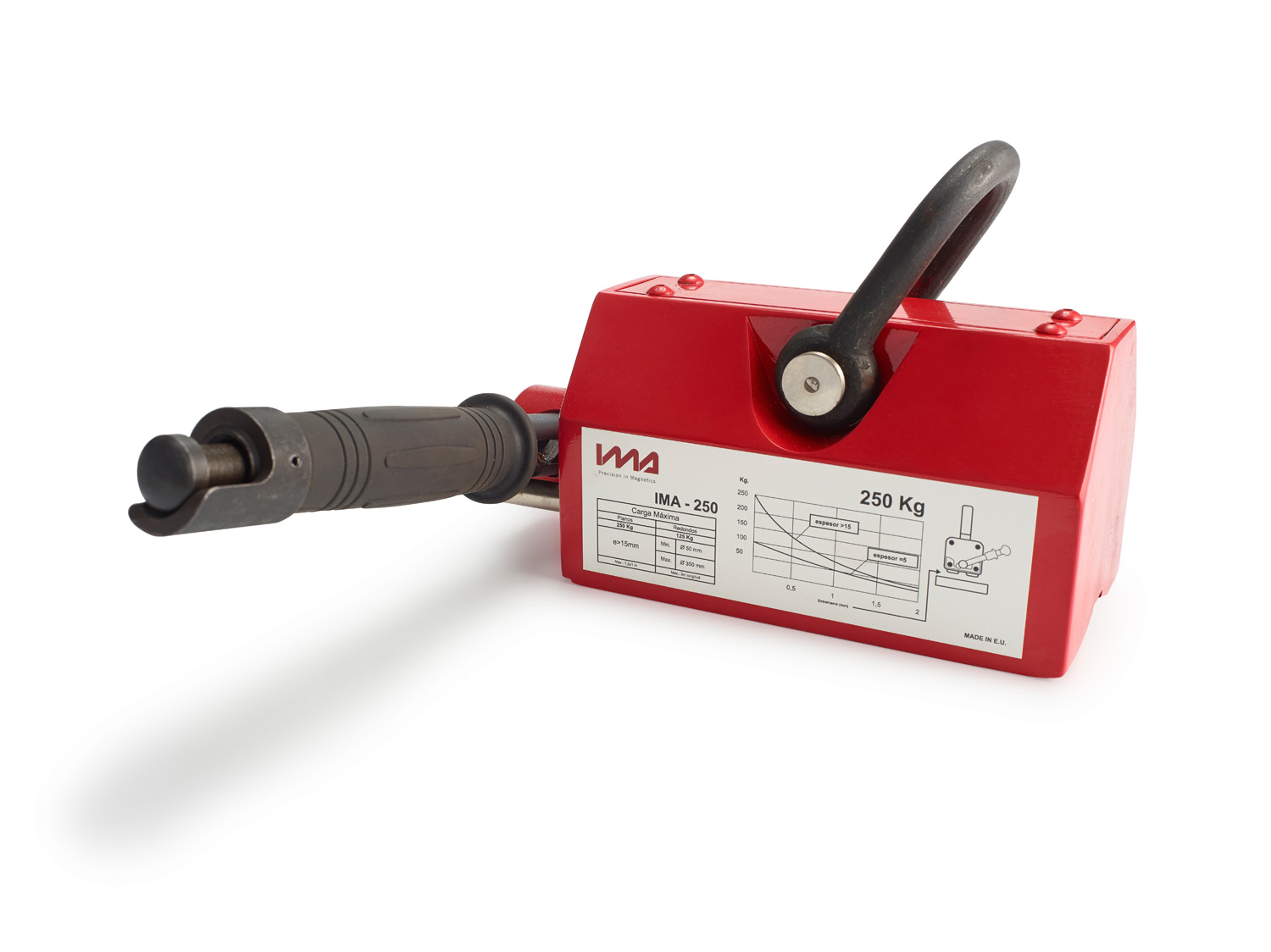
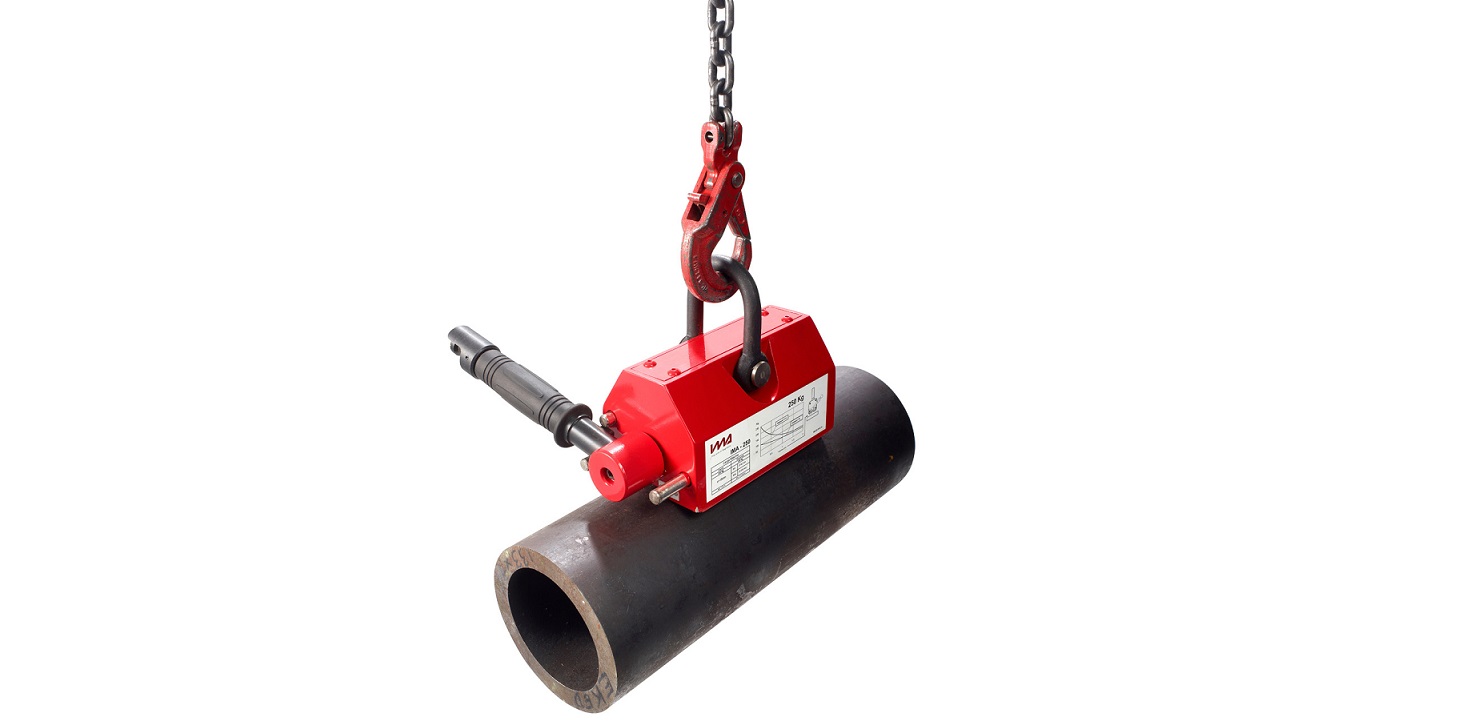
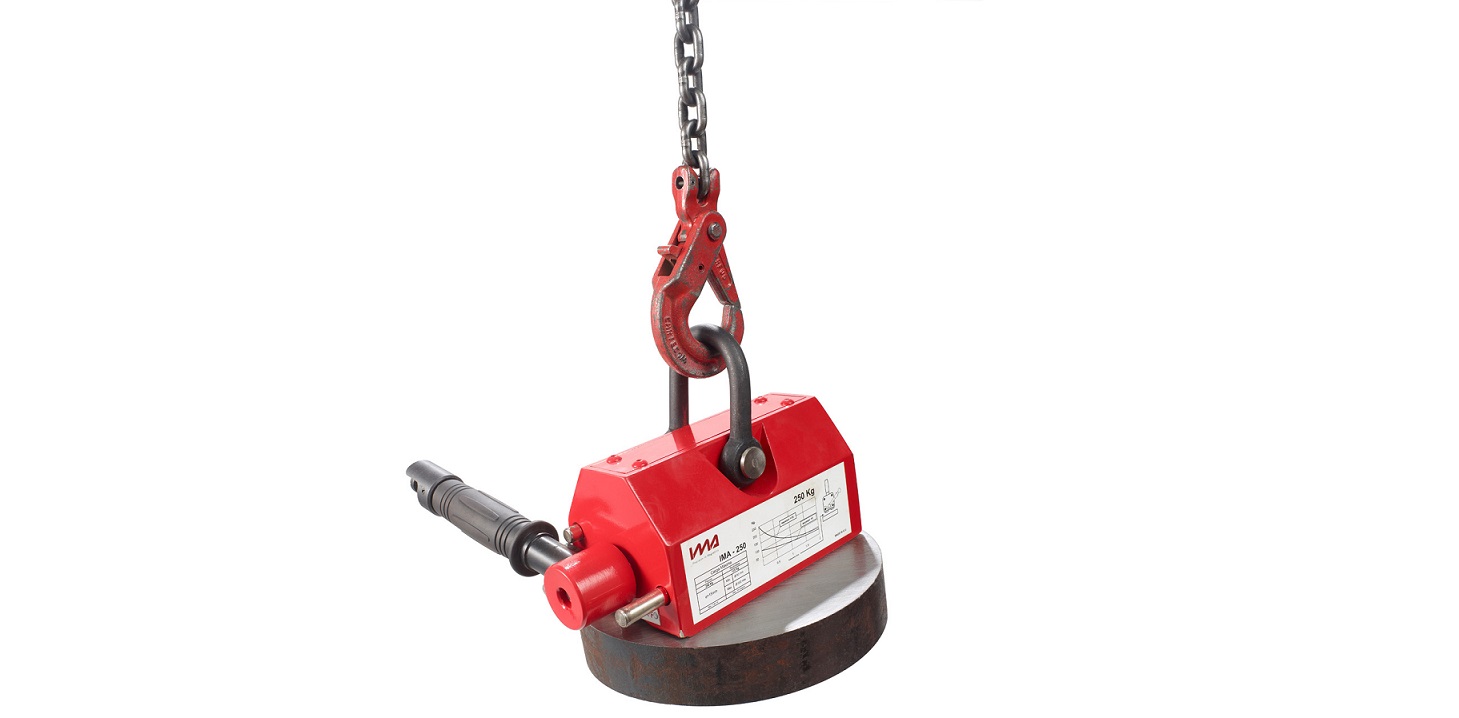





Recent Comments